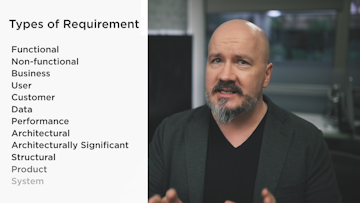
To plan, build and ship a successful system or application, you need to first get clear on exactly what you need the system to do, and what qualities you expect from it. In this course, Microsoft Azure Developer: Aligning Functional and Non-functional Requirements, you will learn foundational knowledge to discover, write, and refine your functional and non-functional requirements. First, you will see how to extract requirements from larger business ideas, and why the distinction between functional and non-functional is important. Next, you will explore ways to discover unspoken assumptions, and integrate these ideas in user stories...
Read more
Good to know
Save this course
Activities
Career center
Requirements Engineer
Project Manager
Software Developer
Systems Analyst
Technical Writer
UX Designer
Business Analyst
Database Analyst
IT Architect
Systems Engineer
Quality Assurance Analyst
Product Owner
Business Process Analyst
Data Analyst
Business Systems Analyst
Reading list
Share
Similar courses
OpenCourser helps millions of learners each year. People visit us to learn workspace skills, ace their exams, and nurture their curiosity.
Our extensive catalog contains over 50,000 courses and twice as many books. Browse by search, by topic, or even by career interests. We'll match you to the right resources quickly.
Find this site helpful? Tell a friend about us.
We're supported by our community of learners. When you purchase or subscribe to courses and programs or purchase books, we may earn a commission from our partners.
Your purchases help us maintain our catalog and keep our servers humming without ads.
Thank you for supporting OpenCourser.


